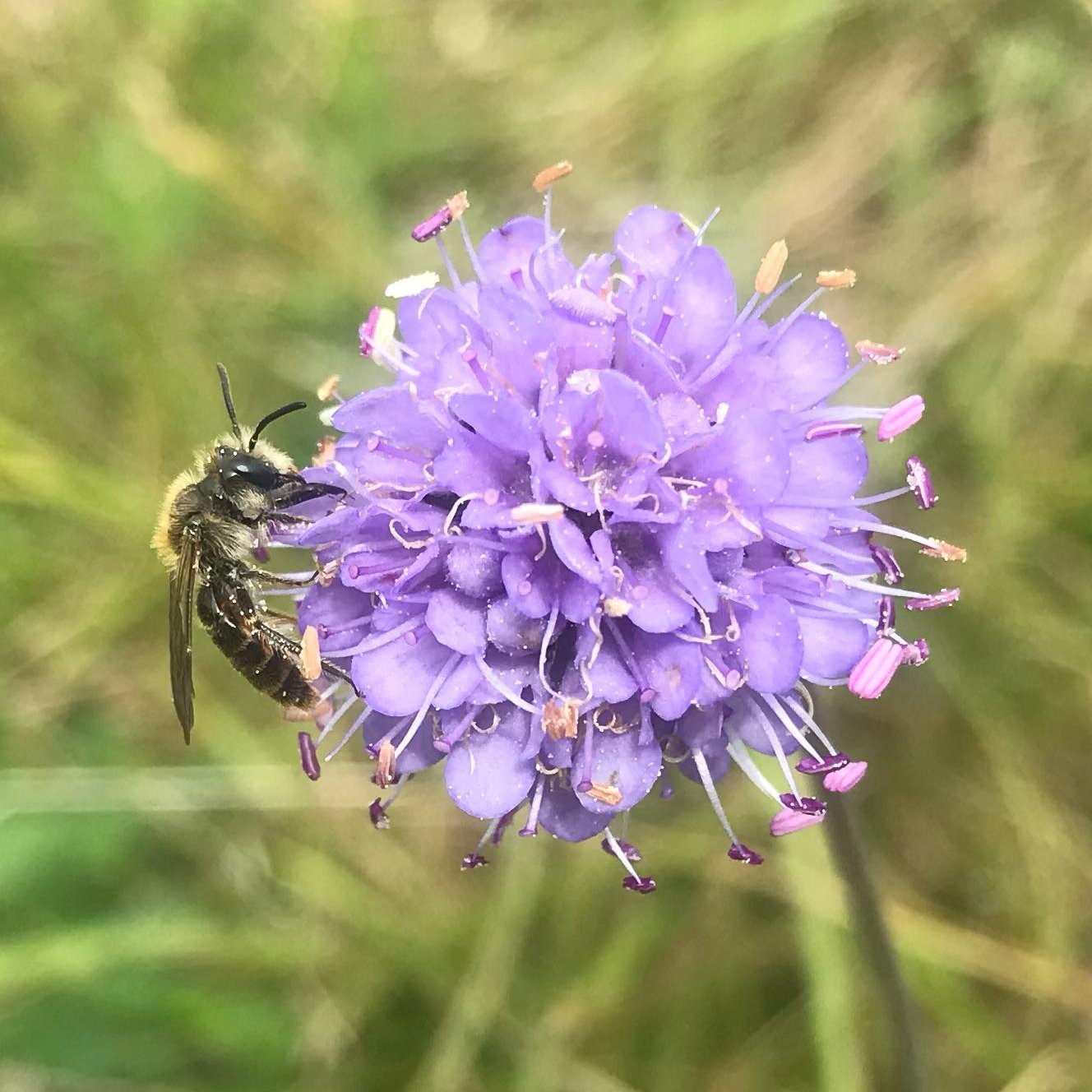Meet the small scabious mining bee
Posted 19 Aug 2022

At Highland Wildlife Park, our wildlife conservation charity’s experts look after some of the largest animals, from tigers to polar bears, but did you know about some of the tiny but mighty insects our teams also care for?
As well as working as part of the Rare Invertebrates in the Cairngorms (RIC) partnership on our pine hoverfly conservation breeding programme, we also collaborate on knowledge sharing and research on another special little pollinator – the small scabious mining bee. You might be familiar with honeybees and bumblebees, but mining bees are in a class of their own!
One of Scotland's rarest bees, this tiny invertebrate is only found in a small number of sites in the Highlands. It is thought the species is threatened due to habitat loss and this month we are conducting surveys looking for this bee within the park in locations where we know it has been spotted in the past two years.
August is the main flight season for the small scabious mining bee, so it is the only chance we get to conduct a capture, mark and release programme, to try and establish the population size and estimate the distance the bees travel around the park. This means going out at various times to count the bees we see, capturing them and giving them tiny dots of paint before we release them so we can identify them again later.
The male and female of this small bee look different to both each other and other species of bee. The female has orange hair on the top half of the body and face, with the second half of the body ranging from bright orange to dark with brown stripes. Most importantly, she has long white hairs on her legs, for collecting pollen. The male is slightly smaller, with less obvious white leg hair, as he doesn’t collect any pollen, and a white patch on the front of the face. Small scabious mining bees are solitary, which is different from bumble and honeybees who have a more complex social structure.
The small scabious mining bee gets its name from the relationship between the female and the devil’s-bit scabious plant. Females use the pollen from this pretty purple flower to stock their nests for the developing young bees.
In the past year we have planted around 200 devil’s-bit scabious plugs near the existing population in the hope of encouraging the bees to extend their range within Highland Wildlife Park. So far, this is looking positive and we have been busily counting and marking bees over the past couple of weeks.
Our work with small scabious mining bees is part of our charity's biodiversity action plan for the park. This plan spans the various ecosystems within the park and is designed to strengthen the chances for native species to thrive. Beyond our own onsite biodiversity work, the park’s small scabious mining bee population is also an important bridging site for this wee beastie, making our partnership with RIC key to understanding our place in the wider protection of this amazing pollinator.
Carl Allott
Assistant conservation project officer, Royal Zoological Society of Scotland

